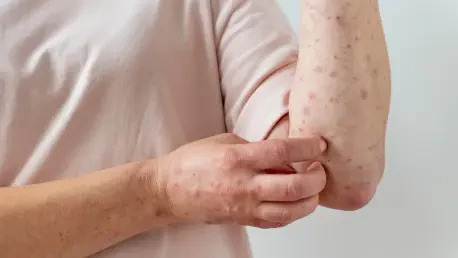Amid growing pressure to protect food systems and rural incomes from endemic zoonoses that quietly sap productivity and public health, a nationwide livestock survey in Cameroon has reset the conversation by identifying a single species, Brucella abortus, as the cornerstone of the country’s brucellosis problem and the key to solving it. By synchronizing field epidemiology with laboratory precision, the work cut through the noise that often clouds species attribution and transmission dynamics. It also reframed risk beyond cattle sheds and markets, tracing pathways that run through milk vendors, family kitchens, and cross-border trade corridors. The message was sharp: control hinges on cattle, and cattle-focused action must be grounded in diagnostics capable of seeing beyond antibody signals to the genotypes that sustain spread.
Objectives and Rationale
The investigation began with a practical question that had lingered in policy circles: which Brucella species actually drove disease across Cameroon’s mixed production systems, and how did that vary by host? The study sought to resolve that uncertainty by measuring prevalence in cattle, goats, and sheep while determining, decisively, whether B. abortus or B. melitensis held the upper hand. This was not academic bookkeeping. Species identity determines which vaccines are relevant, which husbandry changes will matter, and how clinical suspicion should be weighted in rural clinics that see fever first and etiology later. Moreover, the team pushed past serology, acknowledging its value yet recognizing its blind spots in differentiating species or current infection from prior exposure.
With those gaps in mind, the rationale expanded to encompass molecular tools that could sharpen inference and shorten the distance from data to action. Whole-genome and targeted sequencing promised lineage-level detail: who infected whom, how far strains had traveled, and whether virulence traits or resistance signals were changing the risk calculus. Mapping those answers onto agroecological gradients offered a way to move from national generalities to tailored guidance—one district leaning into vaccination drives, another doubling down on pasteurization messaging, a third tightening movement controls during seasonal transhumance. The objective, ultimately, was a playbook that matched Cameroon’s livestock realities, not a generic template imported from elsewhere.
Sampling and Dual Diagnostics
Researchers structured sampling to mirror the country’s livestock geography, spanning humid zones of mixed crop–livestock farms and drier rangelands where pastoral herds move seasonally to chase pasture and water. Cattle, goats, and sheep were enrolled across markets, ranches, and community herds, capturing both settled and mobile systems. That breadth mattered: the interface of trade and transhumance often sets the stage for pathogen exchange, and a national picture needs the full cast. Serological screening delivered the first layer—wide-angle estimates of exposure that flagged hotspots and suggested reservoirs. Yet even at this stage, the team anticipated ambiguity where antibodies alone could not discriminate species or recent infection.
To close that gap, PCR and genomic sequencing were embedded from the start, not bolted on after the fact. Positive serology triggered confirmatory assays that could pin down species identity and, crucially, place isolates on a phylogenetic tree. This dual strategy flipped a common limitation into an asset: instead of accepting serology’s fuzziness, the pipeline used it as a net to catch likely cases and then used molecular tools to sort them with precision. The approach also allowed for quality control, revealing false positives and ensuring that resources followed evidence. In practice, this meant that surveillance could be both broad and deep—wide enough to detect patterns across regions, and sharp enough to guide targeted interventions as conditions shifted.
Molecular Characterization and Phylogenetics
Sequencing results brought the epidemiology into focus, drawing a clean line through questions that had previously been answered with speculation. B. abortus dominated across the dataset, forming coherent lineages whose distribution mirrored livestock movement and trade routes rather than random drift. These clades illuminated directionality, with signatures of spread along recognized corridors and occasional hints of cross-border exchange. Such resolution turns maps into management tools: if a lineage clusters in districts linked by cattle commerce, then intervention schedules can follow the same roads, timing vaccination before peak movements to reduce seeding into new areas.
Moreover, genomic analysis surfaced features that matter for risk assessment beyond simple presence or absence. Virulence-associated markers helped explain why certain herds suffered repeated abortions while others saw subtler productivity losses. Preliminary resistance signals, though not yet shaping first-line treatment guidance, provided a rationale to sustain laboratory capacity for human case management in parallel with veterinary control. The coherence between phylogenetic structure and field observations built confidence in the conclusions: this was not a diffuse, multi-species picture but a story anchored in bovine reservoirs, transmissibility tied to reproductive biology, and lineage spread patterned by predictable human decisions about grazing and trade.
Host, Space, and Spillover
Host association aligned with textbook biology yet carried distinct policy weight in Cameroon. Cattle showed the highest seroprevalence by a clear margin, consistent with B. abortus’s affinity for reproductive tissues and the intense exposure that follows calving and abortion events. Goats and sheep were not absent from the picture, but their lower prevalence contrasted with regions where B. melitensis drives small ruminant outbreaks. That divergence matters for messaging: blanket warnings may miss the mark, while cattle-centered advice on calving hygiene, disposal of reproductive materials, and milk handling speaks directly to the dominant risk. For farmers, the implications were concrete—protect breeding stock, prevent contact with aborted fetuses, and avoid raw milk.
Geography, however, modulated those host patterns, producing a mosaic of high- and low-risk areas shaped by management and movement. Pastoral zones with seasonal mobility showed higher and more variable prevalence, likely reflecting congregation at water points and the churn of animals through markets. Mixed systems with better housing and biosecurity showed steadier, lower levels. Along some edges, wildlife interfaces emerged as plausible contributors, warranting targeted research rather than blanket assumptions. For clinicians and veterinarians, this spatial texture reinforced a pragmatic point: interventions travel best when routed through local realities, not imposed as a uniform prescription over heterogeneous terrain.
Zoonotic Risk and One Health Implications
Human exposure threaded through the livestock narrative at every turn, from handling of parturient cows to the appeal of fresh, unpasteurized milk in communities where refrigeration is limited. Endemic B. abortus sharpened clinical suspicion in febrile patients with occupational exposure—herders, milkers, abattoir workers—and in households where livestock live near kitchens and bedrooms. Aligning laboratory algorithms with that reality improved yield: when species expectations ground test choices, turnaround times shrink and confirmatory testing is used more judiciously. Equally, simple hygiene practices on farms—gloves during calving, secure disposal of placenta and aborted materials, avoidance of raw dairy—offered low-cost risk reduction.
A One Health frame connected these threads into policy. Veterinary services, public health programs, and environmental authorities each held part of the answer, but alignment turned partial efforts into coherent strategy. Pasteurization campaigns found traction when paired with cattle vaccination drives; surveillance made sense when data flowed across sectors and into joint dashboards; community education resonated when delivered by trusted local actors who understood seasonal routines. The study’s findings gave that coordination a focal point: prioritize cattle, but keep the broader interface in view, because spillover is not a side note—it is the reason brucellosis remains a stubborn threat to households and health systems.
Operational Roadmap and Next Steps
Control logic flowed naturally from the evidence: vaccinate cattle against B. abortus, modernize diagnostics to confirm species and track lineages, and tailor movement management to the rhythms of trade and transhumance. RB51 offered a pragmatic choice, with diagnostic advantages that preserve serological tools for surveillance. Yet success depended on execution—steady cold chains, predictable supply, and outreach that addressed farmer concerns about costs and adverse events. Embedding PCR capacity within veterinary labs shortened feedback loops, while regional genomic surveillance flagged shifts in circulating lineages that might alter risk. Where coverage lagged, program design turned to mobile teams and community-based distribution to reach pastoral herds.
Policy architecture, in turn, gained clarity from phylogenetic maps that traced spread along known corridors. Cattle-focused regulations—certificates tied to vaccination status, staging posts with biosecurity checks, and timed movement windows—were prioritized where they would cut transmission without paralyzing commerce. Gaps were acknowledged: wildlife roles remained hypotheses pending targeted sampling; incidence estimates required longitudinal cohorts; and delivery models needed testing in hard-to-reach areas. Even so, the way forward was laid out in practical terms. Vaccination campaigns were scaled where burden and logistics aligned, molecular testing became routine in sentinel districts, and cross-border data sharing synchronized interventions along trade routes. In sum, the path had been charted from evidence to action, and the levers that would bend the curve on brucellosis were identified with precision.









